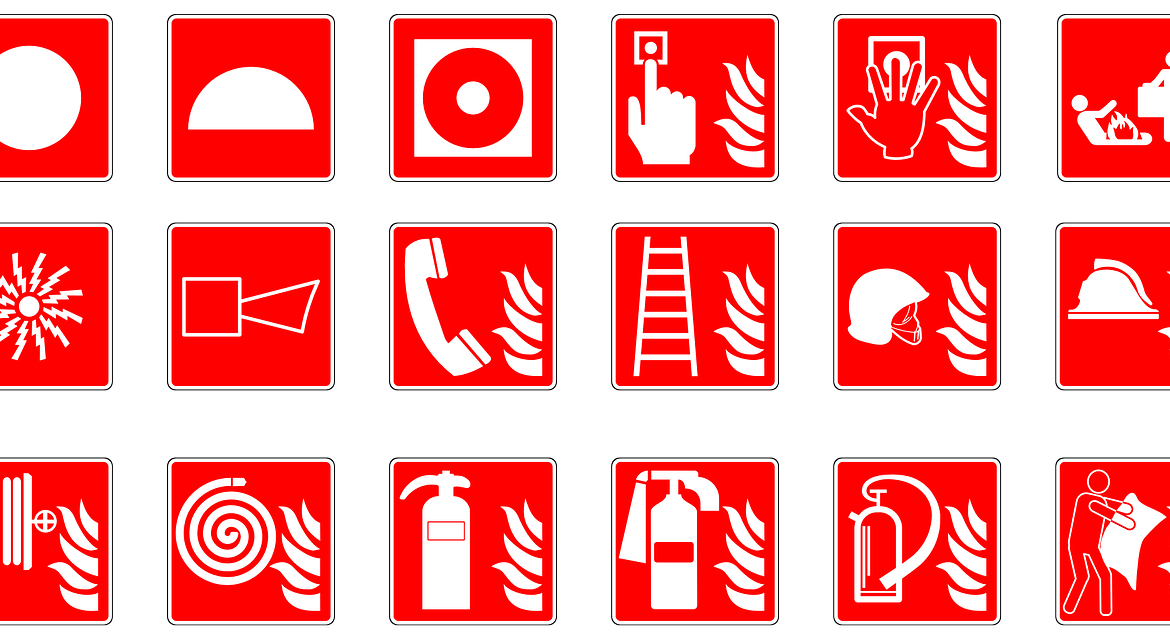Managing Fire Safety
Good management of fire safety is essential to ensure:
That fires are unlikely to occur;
That if they do occur, they are likely to be controlled or contained quickly, effectively and safely;
That if a fire does occur and grow, everyone in your premises is able to escape to a place of total safety easily and quickly.
This Fire Risk Assessment is central to good management practice in fire safety. It will help you ensure that your fire safety procedures, fire prevention measures, and fire precautions (plans, systems and equipment) are all in place and working properly, and it identifies issues that need attention.
The aims of the Assessment are:
To identify the fire hazards
To reduce the risk of those hazards causing harm to as low as reasonably practicable
To decide what physical fire precautions and management arrangements are necessary to ensure the safety of people in your premises if a fire does start.
The Assessment is an organized and methodical look at your premises, the activities carried on there, and the likelihood that a fire could start and cause harm to those in and around the premises.
The Significant Findings and Recommendations section provides the basis for a plan to secure the necessary improvements.
The Regulatory Reform (Fire Safety) Order 2005
The Order replaces previous fire safety legislation. Any fire certificate issued under the Fire Precautions Act 1971 will cease to have any effect. If a fire certificate has been issued in respect of your premises or if the premises were built to recent building regulations, as long as you have made no material alterations and all the physical fire precautions have been properly maintained, then it is unlikely you will need to make any significant improvements to your existing physical fire protection arrangements to comply with the Order. However, you must still carry out a fire risk assessment and keep it up to date to ensure that all the fire precautions in your premises remain current and adequate.
There are other fire safety duties you must comply with:
- You must appoint one or more competent persons, depending on the size and use of your premises, to carry out any protective or preventative measures.
- You must provide your employees with clear relevant information on the risk to them identified in the risk assessment.
- You must consult your employees or their representative about the measures you have taken to prevent fires.
- You must inform non-employees, such as temporary or contract workers, of the relevant risks to them, and provide them with information.
- You must co-operate and co-ordinate with other responsible persons who have premises in the building and inform them of any significant risks you find, and how you will seek to reduce/ control those risks, which might affect the safety of their employees.
- You must provide the employer of any person from an outside organisation who is working in your premises with clear and relevant information on the risks to those employees and the preventative measures taken.
- You must consider the presence of any dangerous substances and the risk this presents to relevant persons from fire.
- You must establish a means of contacting the emergency services and providing them with any relevant information about dangerous substances.
- You must provide appropriate information, instruction and training to your employees, during their normal working hours, about fire precautions in your workplace, initially and have regular updating/refresher training.
- You must ensure that the premises and any equipment provided in connection with firefighting, fire detection and warning, or emergency routes and exits are covered by a suitable system of maintenance, and are maintained by a competent person or company in an efficient working order and in good repair.
- You must if employing a child provide the parent with clear and relevant information on the risks to that child in case of fire.
- Scope of the Fire Risk Assessment
This assessment has been carried out in accordance with the Regulatory Reform (Fire Safety) Order 2005, and the appropriate Guides. The following people contributed to or are concerned parties
The responsible person: The Registered Owner
In summary, the assessment process was as follows:
Fire hazards
We identified sources of ignition (for example, electrical, gas or oil-fired heaters), sources of fuel (for example, furniture and other combustible materials left on the escape route) and potential sources of oxygen (for example, poor compart-mentation from airflow when self-closing doors are propped open).
People at risk
We considered where you have people working, either at permanent locations (such as workstations) or at occasional locations around the premises, and considered who else might be at risk, such as the residents, public, or visiting contractors and where these people are likely to be found. Consideration was also given to employees who work alone and/or in isolated areas, e.g., cleaners and security staff. We also considered people with disabilities or those who may have some other reason for not being able to leave the premises quickly.
Identifying and managing the risk
We considered the fire detection and warning systems, where fitted; the measures you have taken to control the spread of fire and to protect the means of escape; the adequacy of the emergency lighting and escape route signage; the adequacy of the provision of fire extinguishers and your arrangements for the maintenance of fire safety equipment.
Training and records
We assess how significant findings and recommendations are acted upon; we consider how employees and other users of the building are informed about what to do in an emergency (for example, by fire action notices). We also assess staff training arrangements where this is applicable.
Review
We consider how recommendations are implemented, and how the fire risk assessment is reviewed in response to changing circumstances, for example, alterations to the building, including the internal layout; problems reported by employees and visitors; and whether there are adequate arrangements for periodic review.
Get A Quote

